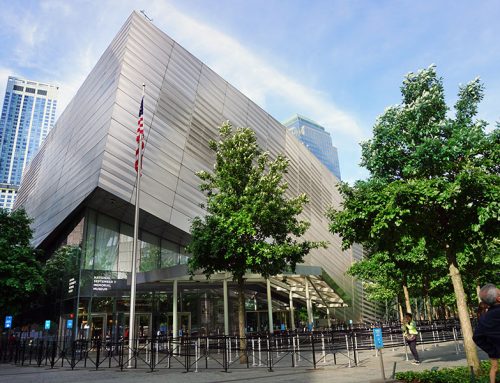By Akers Editorial
The hills are alive with music, art, and literature

Exploring the Berkshires
In the Berkshires of Massachusetts, travelers can find picturesque towns and scenes straight out of a Rockwell painting.
Story & Photos: Gary McKechnie
There’s something homelike and comforting about the Berkshires of western Massachusetts. As you explore these hills, drive beside glistening lakes, and stroll through postcard-perfect villages, you may feel as if you’ve stepped into a Norman Rockwell canvas.
In a way, you have.
After moving from Vermont in 1953, it was in the Berkshires that Rockwell painted many of his best-known images and where a museum now honors his works.
These mountains were essential in helping Rockwell capture his vision of America. Come here and you’ll find the Berkshires will capture your heart.
Two for the road
Just an hour east of Albany, New York, the area known as the Berkshires occupies a relatively thin slice of western Massachusetts. But what tops this slice can fill several days—or several years.
A good place to start is in the middle of it all: Lenox. Upscale but down home, elegant yet charmingly simple, this town of 5,000 enchants visitors with art, music, literature, dance, history, shopping, and dining. The cultural centerpiece of town is Tanglewood, the summer home of the Boston Symphony Orchestra (bso.org).
Performances by the orchestra between June and August are brightened by guest conductors such as John Williams, and appearances by visiting artists, such as Yo-Yo Ma, Bob Dylan, and James Taylor, who lives nearby. Whether under cover in the Koussevitzky Music Shed, which seats 5,000, or atop a blanket on sweeping lawn with room for 10,000 more, as you listen to musical notes flowing over the hills, the experience is magical.
[row] [column lg=”4″ md=”12″ sm=”12″ xs=”12″ ] [/column]
[column lg=”4″ md=”12″ sm=”12″ xs=”12″ ]
[/column]
[column lg=”4″ md=”12″ sm=”12″ xs=”12″ ]
 [/column]
[column lg=”4″ md=”12″ sm=”12″ xs=”12″ ]
[/column]
[column lg=”4″ md=”12″ sm=”12″ xs=”12″ ]
 [/column]
[/row]
[/column]
[/row]
Just a few miles away, the Norman Rockwell Museum (nrm.org) welcomes 200,000 visitors annually. The world’s largest collection of Rockwell’s original art includes framed copies of his 323 “Saturday Evening Post” covers, as well as the paintings considered his masterwork: “The Four Freedoms.” Displayed in the center of the main gallery, “Freedom of Speech,” “Freedom from Want,” “Freedom from Fear,” and “Freedom of Religion” were Rockwell’s interpretation of Franklin Roosevelt’s “Four Freedoms” speech in 1941 on the eve of World War II. When Rockwell’s paintings were displayed during a war bond drive, sales of prints and war bonds raised $130 million for the war effort, which is equivalent to roughly $1.6 billion today. An audio tour narrated by his son, as well as daily-guided tours, add to your enjoyment.
Outside on a small rise above the rolling hills is Rockwell’s studio. It is much as he left it with tubes of paint, brushes, and reference books that draw your attention to his chair, his palette, and the original easel where Rockwell’s America was born.
Incredibly, Rockwell wasn’t the neighborhood’s only legendary artist. Down the street is Chesterwood (chesterwood.org), the home of Daniel Chester French. If the name isn’t familiar, his works are hard to forget. In fact, you probably carry pictures of them in your wallet.
French was the sculptor behind the monumental sculpture within the Lincoln Memorial, as seen on the back of $5 bills and pennies, if you look close. He also created Concord’s Minute Man statue, as well as hundreds of smaller yet equally impressive pieces you’ll see as you stroll the grounds of this 122-acre Italian-style villa. Inside the artist’s cavernous studio are medallions, busts, friezes, faces, hands, and miscellaneous statues, including working studies of Abraham Lincoln. Each is recognizable, but they reveal slightly different poses French tested before selecting the version to be seated in the memorial.
In the nearby village of Stockbridge, it’s a treat to walk along Main Street, visiting shops, snapping photos, stopping for a bite to eat, or relaxing in a rocker on the porch of the famed Red Lion Inn (redlioninn.com). Here since 1773, the inn is one of the town’s most recognizable landmarks, outside of the town itself. In his painting “Stockbridge Main Street at Christmas,” Rockwell painted the inn as well as every shop and business, including his first studio, which you’ll see above the Stockbridge General Store. Each December, that painting is re-created with cars and decorations staged to mimic the picture.
From here, delightfully springy canopy roads zip through the woods, past broad lakes and colonial homes as you move from music to art to literature. Specifically, back to Lenox and The Mount, the mansion home of Edith Wharton (edithwharton.org).
A three-time Nobel Prize nominee for literature, Wharton was the first woman to receive a Pulitzer Prize for fiction for “The Age of Innocence.” Her broad range of interests and literary gifts—she also wrote “The Decoration of Houses” and the weird and tragic “Ethan Frome,” among others—helped her finance the 50-acre estate. Tours of the mansion and botanical gardens are complemented by lectures, book readings, and other special events.
En route back to Lenox, the Canyon Ranch resort (canyonranch.com) is on your right. Upscale doesn’t quite capture this retreat, where a two-night stay with a suite, meals, and fitness classes starts at $2,800.
For a destination with such an oversized reputation, the heart of the village is only a few blocks long and a few blocks wide, making it perfect to explore on foot. A cozy independent bookstore, antique shops, art galleries, and coffee bars are here, as is the highly popular Olde Heritage Tavern. It’s surprising to find such an active neighborhood bar in such a sophisticated community, but it’s a welcoming place to go for pub grub along with beers, stouts, ales, and lagers.
Cities & Towns
Stockbridge and Lenox are just two of many wonderful towns in the Berkshires. Pull out a map and chart a course to other charming places.
Great Barrington
About 10 miles south of Stockbridge is Great Barrington. Roughly the size of Lenox and Stockbridge combined, the heart of town is the shopping district, which looks like a movie set. At the historic Maihawe Performing Arts Center (mahaiwe.org), the calendar includes ballet, opera, and a variety of musical performances.
Lee
A few miles southeast of Lenox, this small town has a working-class feel, but a main street that leans toward trendy. Visiting politicians drop in at Joe’s Diner to chat with the locals.
Pittsfield
North of Lenox, the Berkshire county seat is the largest city in the region and has malls and box stores. It also has farmer’s markets, museums, theaters, concerts, and Arrowhead, the home of author Herman Melville (“Moby Dick”), who lived here from 1850 to 1863. Don’t miss historic Hancock Shaker Village (hancockshakervillage.org), which includes interpretive talks about Shaker life and work, farm and garden tours, and demonstrations of Shaker music, dance, machinery, blacksmithing, and box making.
Williamstown
North of Pittsfield, this town is home to Williams College, which was founded in 1793 and has an alumni list that includes 35 Rhodes scholars, seven Pulitzer Prize winners, a Nobel Prize laureate, 54 members of Congress, 18 governors, four U.S. Cabinet secretaries, an associate justice of the Supreme Court, and a president of the United States, James Garfield. The campus is picturesque and includes bistros, fresh markets, and delis. Nearby, The Clark (clarkart.edu) is a museum with an international reputation for rotating exhibitions of art, photography, and sculpture, and maintaining permanent collections of works by Winslow Homer, John Singer Sargent, Gilbert Stuart, Remington, Degas, Renoir, and others.






























